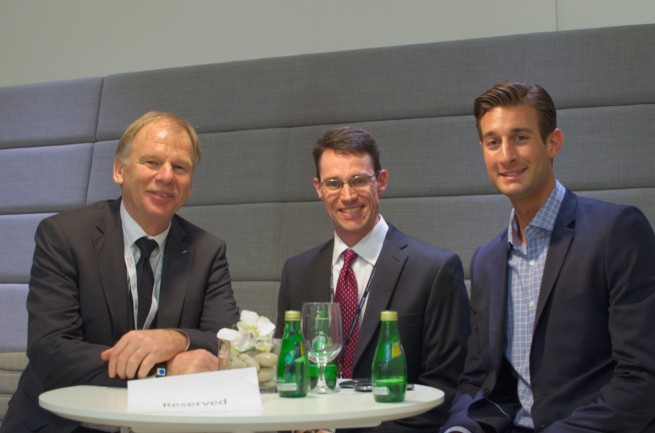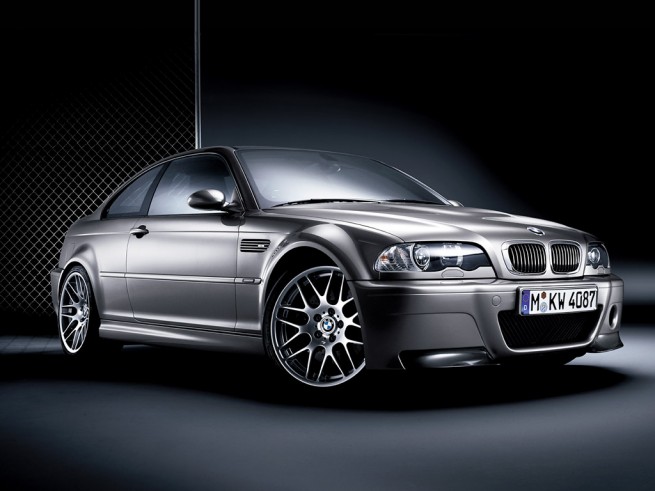BMWBLOG’s Misha Nikolich and Chuck Vossler sat down with Dr. Nitschke – M CEO for an exclusive interview. We had an excellent open discussion about BMW’s most powerful brand, BMW M and as well as M Division’s Motorsport Racing involvement.
BMWBLOG: What did BMW learn form the 1 Series M Coupe and most importantly will there be a successor?
Dr. Nitschke – M CEO: We stopped the production of the 1 Series M Coupe in the middle of last year and we launched in Germany the M135i. It’s a new category for us, the M Performance. At the moment we are very successful with this car. It’s not a pure M car, but we, for example, won the prize of the best sports car in its category in Germany and England. At the moment we are thinking of what can we do with an entry-level car for the M brand. We haven’t made a decision yet, but the 1 M coupe was so successful, that in my opinion, I am absolutely sure we will build a successor.
BMWBLOG: BMW has the M Performance brand coming online, the pure M cars and then you have a 3 Series with an M Sport Package. Is this confusing and do you see a M335i in the future?
Dr. Nitschke: You have to look at the entire portfolio and that you have a clear differentiation of characters. You have to look at the 335i from our colleagues at BMW AG and how well it performs and you really have to determine whether or not there’s any place between a top BMW model and an M model. This is what you have to do segment by segment, because you don’t want to have any internal overlap and fight for the same customer. We want different customers with different aspirations or expectations.
BMWBLOG: Moving on to the M6 Gran Coupe, I would assume a natural competitor would be the Porsche Panamera. Porsche offers an all-wheel drive version as well as a rear-wheel drive. Do you guys ever see yourself offering an all-wheel drive version of the M5 or M6’s?
Dr. Nitschke: For us it’s very important to not put additional weight onto the cars. And with an all-wheel drive we have to put between 80-90 kg additional weight. That’s one main reason why we say an all-wheel drive is not an option for this car. We developed this car on the race track for the street and to have independent steering and precision. Its precision is fantastic and you cannot get this with an all-wheel drive because you have in the steering on the front axle the input of the engine. Therefore, we will not bring an all-wheel drive, only a rear-wheel drive.
We have the Active M Differential that has been taken to a new level: an active system, pre-judging what you need, where you need it in terms of the power and the torque. Therefore for us the rear-wheel drive is definitely the best also in terms of traction. The harmony of the car is absolutely perfect. From the weight to the precision to the acceleration. I think it’s perfect the way it is.
BMWBLOG : You made a good case why you won’t add all-wheel drive including the additional weight. What things has BMW M done to decrease the weight of M cars versus the non-M variants? Like the carbon fiber roof being an example.
Dr. Nitschke: We look at all materials. We use special lightweight materials. Think about our M3 CRT for example. It has a carbon fiber hood and seats. You can put an optional special lightweight battery. Anything we do in racing can be brought in as well, if we can pay for it. Also in the past we had the M3 CSL which had intelligent lightweight construction as well. It’s not one material, it’s various materials all balanced in the right place. This is how M has been working for decades now, starting in 1972. Actually, the previous M5 weighed 150kg less than a standard 550i. Now the current M5 is 30-40 kg less. So our first step is just to reduce that additional weight.
BMWBLOG: You just mentioned a lot of really really great cars like the M3 CSL and the M3 CRT that we don’t get here in the US. Any chance that those types of cars would ever make it to the United States?
Dr. Nitschke: In principle, we want to develop M cars for all markets in the world. We obviously have to look case by case what the regulations and requirements are. So in the future, we will not leave anything out deliberately but it may be a technical or a timing challenge. But in principle we want to have these fine cars available for all markets. But we would obviously benefit from more homogeneous regulations across the world especially for a small volume manufacturer.
BMWBLOG: The new carbon ceramic brakes. Have you had success with selling those because they dissipate heat so well and save weight?
Dr. Nitschke: We are just starting production of these in March for the M5 and M6. And we are very keen to see how many of our customers will opt for this very smart lightweight and performance related feature.
BMWBLOG: Will the 4 years/50,000 mile warranty still apply to these given their cost?
Dr. Nitschke: That is something our BMW NA colleagues will communicate shortly so that everyone is aware when they order this feature which warranty package it includes.
BMWBLOG: Going back to the M Performance vehicles. How has M touched those cars? Did you develop the suspension or were they wholly developed by M?
Dr. Nitschke: We have a core M brand and I would say 60-80% of the parts are new for the core M brand. For M Performance brand, we took old parts and make it new. We take more from the basic car and we put special additional M parts in this car. But the R&D amount is not so high as in a core M3/M5/M6.
BMWBLOG: We are eagerly anticipating the new M3. Are you willing to comment on which motor it will come with? A triple-turbo charged inline 6 cylinder or….?
Dr. Nitschke: We heard about a triple-turbo charged motor. We have heard about an electric turbo. We have heard so many things. Well of course we have considered various solutions and you can assume that we at M have made a decision. Which we will not tell you yet. (Note: He says with a laugh and a smile!) I can say definitely that it will not be the triple diesel.
BMWBLOG: You just introduced the 4 Series Coupe Concept at the Detroit Auto Show. Do you see a two door M3 in the future or are you going to call it an M4?
Dr. Nitschke: Well it’s pretty easy. If there would be a 4 Series and we were to produce an M car on that basis, then it would be called an M4.
BMWBLOG: This year was a very successful year for BMW Motorsport with the DTM Championship with Bruno Spengler. We were all very excited to see that in the first year. Will we see BMW M and BMW Motorsports working closely together with production vehicles?
Dr. Nitschke: Absolutely! Our 400 engineers in Garching close to Munich are Motorsport enthusiasts. Everything that they do, they look with one eye to Motorsport and we work very close together. We look for every feature we bring in our cars to use in the Motorsport version. We look at what can we bring to our latest M3 and M4 cars. There’s a very strong relationship.
There are clearly recognizable things. First of all, there is an exchange of staff so that there is an exchange of knowledge as well. We support this in the right manner, so that we have this interaction. The other thing is that all the things we learn in the Motorsports regarding materials, processes and so on, also can be transferred to production cars. Remember the M3 E46 GTR? The eight-cylinder car? It was pretty successful, wasn’t it? That engine was the basis for the current E90 M3 engine. So you see there’s a close interaction between Motorsports and production cars. Actually the project leader of this Motorsport at the time is now the head of engineering at BMW M, so you can see the interaction.
BMWBLOG: Thank you very much for your time.








































































